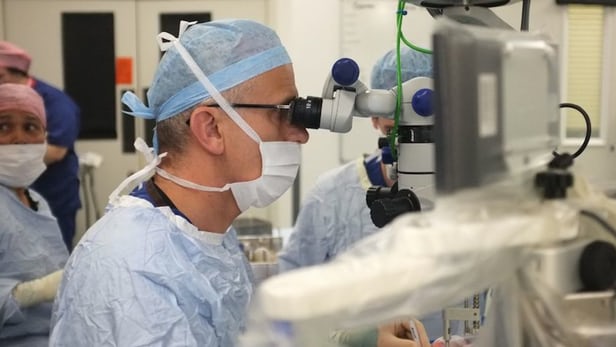For years, medical robots like Intuitive Surgical’s da Vinci have assisted in the operating room, expanding a range of procedures previously deemed impossible. Now, for the first time, a remote-controlled robot has lent surgeons at the University of Oxford a helping hand in performing a delicate operation inside the eye with sub-millimeter precision that is often not humanly possible.

Keyhole surgery techniques are reducing recovery times for patients, while also lessening the risk of infection. Needle-thin instruments can enter the body through tiny incisions or openings like the ear, allowing for finely tuned operations. Many of these are beyond human capabilities, such as operating on a heart while matching the rhythm of its beating, which removes the need to stop the heart entirely.
In the Oxford procedure, a membrane measuring approximately 100th of a millimeter thick on the surface of the patient’s retina had contracted, causing distortion of his vision. Removing the membrane from the retina is a highly delicate operation, and while it is possible for human surgeons to perform, it requires them to slow down their pulse and time their hand movements around their heartbeats.
Rather, the Robotic Retinal Dissection Device (R2D2) was there to make the process easier. The robot has seven motors that can be controlled by a computer, allowing its movements to be as tiny as 1,000th of a millimeter (well within the scale of the patient’s membrane). During the procedure, the device entered the patient’s eye through a hole less than 1 mm wide, which needed to be continuously located even as the eye itself moved around.
Professor Robert MacLaren controlled the robot using a joystick and touchscreen that transferred his standard-scale movements down to the sub-millimeter scale of the robot. MacLaren was able to watch the entire process through an operating microscope. Ultimately, the operation was successful, resulting in the patient’s sight starting to return.
“There is no doubt in my mind that we have just witnessed a vision of eye surgery in the future,” said MacLaren.
This operation was part of a first trial stage, which will involve 12 patients total. In the second phase, R2D2 will inject fluid through a needle placed under the retina, expected to ultimately lead to a new gene therapy technique to help treat blindness.
“This will help to develop novel surgical treatments for blindness, such as gene therapy and stem cells, which need to be inserted under the retina with a high degree of precision,” MacLaren said.
Via New Atlas
Advertisement
Learn more about Electronic Products Magazine








